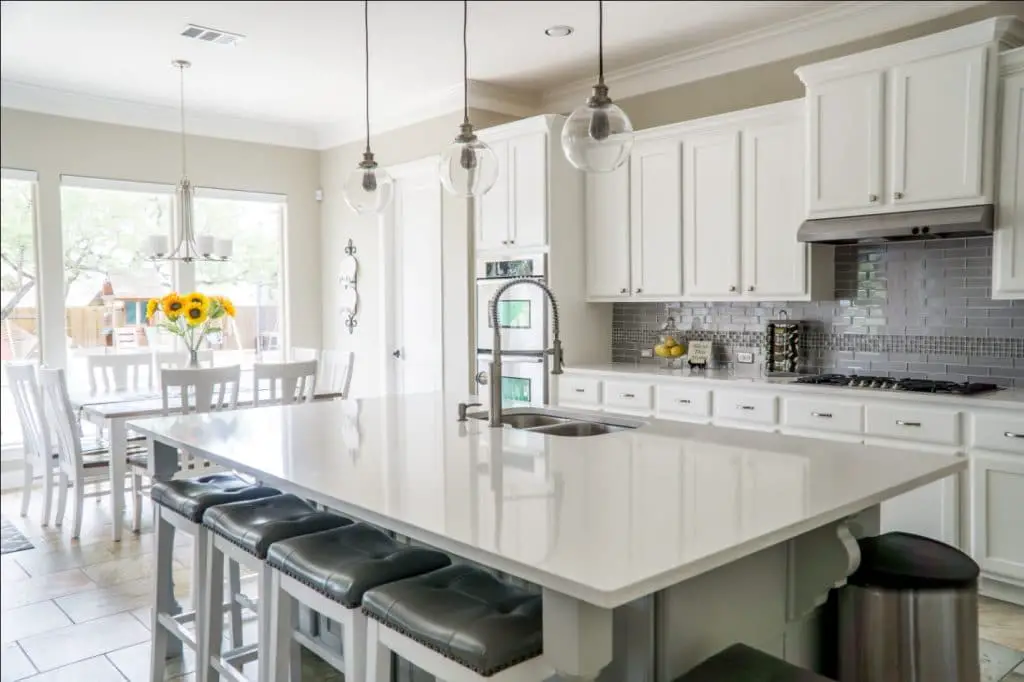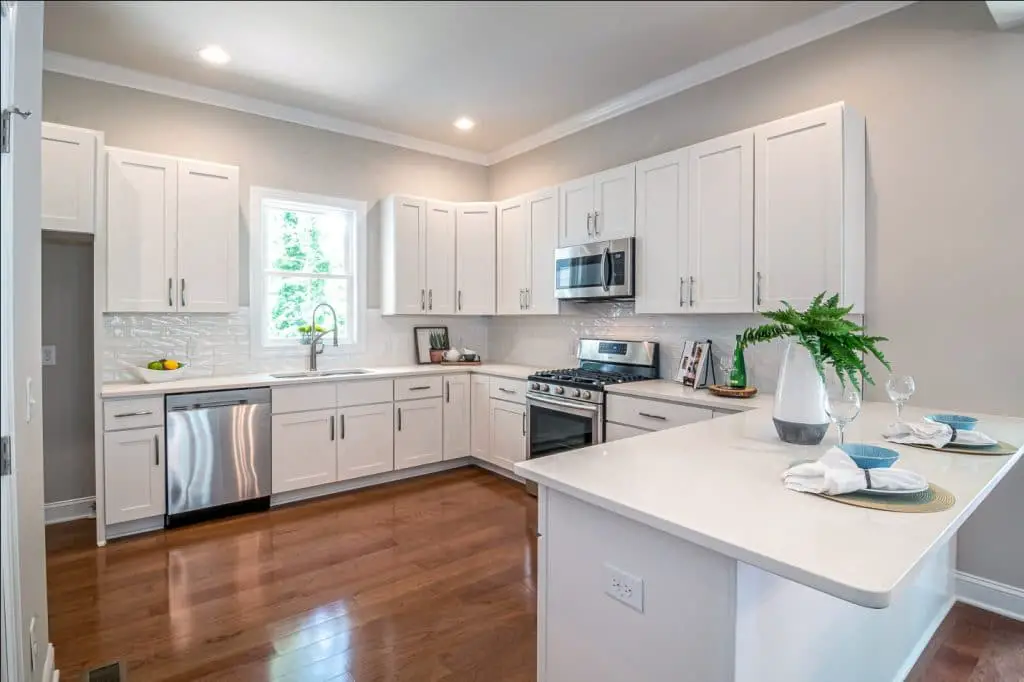Cabinets are arguably the most integral part of a kitchen’s design. After all, they provide all the storage you need in a kitchen. Moreover, they play a significant role in enhancing the visual appeal of your kitchen. Hence, as you remodel your kitchen, it is critical to choose the right cabinet material so your cabinets can serve their purpose well while adding aesthetic appeal to your kitchen.
Let’s look at some of the most common kitchen cabinet materials along with their pros and cons so you can get only the best for your kitchen.
Hardwood
By far the most commonly used cabinet material for the kitchen is hardwood. It is solid wood which is non-toxic and is a renewable resource. It is one of the most preferred kitchen cabinet materials because it is scratch and dent-resistant. Moreover, when you choose wood as a material for kitchen cabinets, you can choose various patterns and warm colors that can match your existing kitchen ambiance. Given its durability and overall high quality, hardwood is one of the pricier alternatives for kitchen cabinet materials.
Some of the pros and cons of using hardwood as a kitchen cabinet material are highlighted below.
Read Also: 9 Ways to Add Color to Your Kitchen
Pros
- Natural material with unique patterns and colors, and
- Durable,
Cons
- Hardwood is expensive and heavy,
- Changes in temperature and humidity can bend or deshape the surface.
Plywood
Another type of kitchen cabinet material that makes a hardwood alternative is plywood. Kitchen cabinets made of plywood are solid wood cabinets that are glued and laminated using a hardwood veneer. You can find plywood in several different grades ranging from grade AA to grades D and E. If you work with a professional carpenter with fine skills, even lower quality grades of plywood can make a good choice for kitchen cabinet material.
Plywood kitchen cabinets are strong and pocket-friend. Moreover, in case your plywood cabinet breaks down, they are easily reparable. However, thin plywood kitchen cabinets especially the ones made with lower grade plywood may break easily.
Some of the pros and cons of choosing plywood as a kitchen cabinet material are highlighted below.
Pros
- Resilient material that can withstand temperature and humidity changes, and
- Less expensive than hardwood.
Cons
- Thin plywood kitchen cabinets may break easily,
- Available in different grades so there is a risk that you may end up with a lower quality kitchen cabinet material.
Particle Board
Another kitchen cabinet material that’s considered an alternative to wood is particle board. It is a durable choice that’s made from coarser wood fiber which is bonded and compressed into a board. Particleboard is a less expensive choice of kitchen cabinet material and has a wide application including cabinet boxes and shelves.
However, this less costly wooden alternative has a few downsides. You cannot paint or stain cabinets made from particleboard as the material is covered with laminate or veneer.
Pros
- Pocket friendly,
- Lightweight and
- Good quality particle board cabinets are durable.
Cons
- Cannot be stained or painted,
- Low-quality particle board kitchen cabinets are not durable,
- The particleboard cabinet may sag if overloaded.
Laminates
Hardwood and wooden alternatives may be prone to damage and have a few downsides which make laminates a preferred choice. Laminates are wood-particle, thin sheets that are sandwiched together using layers of compressed paper and plastic resin that’s heated to form a solid piece. The top layer is printed with different patterns and designs to give a fine finish to the cabinet’s exterior.
Laminate is a popular material for kitchen cabinets as it is durable, cheaper, available in several designs and color alternatives, and easy to clean. On the flip side, you cannot paint a laminate kitchen cabinet.
Some of the pros and cons of using laminates as kitchen cabinet material are highlighted below.
Pros
- Durable,
- Easy to clean,
- Available in a variety of colors, patterns, and designs,
- Cost-effective alternative.
Cons
- You cannot paint or stain laminate kitchen cabinets.
Stainless Steel
It might come as a surprise but stainless steel also makes a nice choice for kitchen cabinet material. It is durable and strong, adds a glassy look to your overall kitchen design, and is available in both plain and patterned designs. However, stainless steel makes a more expensive choice for kitchen cabinet material.
Some of the pros and cons of stainless steel include the following.
Pros
- Gives a unique look to your kitchen,
- Sturdy and Durable,
- Stain and rust-resistant, and
- Are easy to clean.
Cons
- Available in a limited range of colors,
- May need re-polishing to maintain a shiny look,
- May dent and scratch,
- The cabinets are noisier than cabinets made from other materials.
What Is the Best Material for Kitchen Cabinets?
Now that you already know the pros and cons of several kitchen cabinet materials, you can decide on which one of the best materials for your kitchen cabinets. Your choice of material for your kitchen cabinet will depend on several factors including
- The material’s durability,
- Your budget,
- the existing look of your kitchen,
- the extent of kitchen remodeling and
- Your preference for kitchen cabinet material.
Hardwood makes the most durable choice of kitchen cabinet material however, it is the most expensive material for kitchen cabinets which also adds a classic touch to your kitchen. On the other hand, stainless steel is a super functional material for your kitchen cabinets and also makes a unique choice for kitchen cabinet material. Other types of materials including plywood, particleboard, and laminates also make a decent choice and are available in a variety of colors and styles.
The best material for a kitchen cabinet will ultimately come down to your budget, personal preference, and overall kitchen design. We hope that this guide to kitchen cabinet materials with their pros and cons will help you make the right choice for your kitchen.



